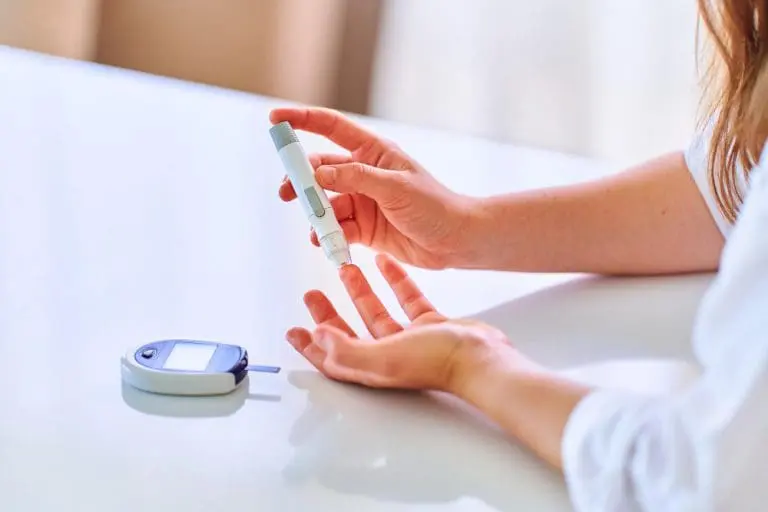Diabetes is a chronic disease of social importance – more than 400 million people worldwide suffer from the disease, with 1.6 million deaths per year directly related to diabetes and its complications. Unlike other diseases, where the screening and diagnostic methods differ, here they coincide completely, which facilitates the diagnosis. Of course, it is impossible to screen the entire population. Skinning should cover risk groups of patients – with family history, obesity (BMI>25), sedentary lifestyle, metabolic syndrome, etc.
We generally divide diabetes into first type (insulin-dependent, associated with autoimmune response and destruction of beta-cells in the pancreas), second type (non-insulin-dependent according to the old classification; associated with insulin resistance) and special forms (e.g. gestational diabetes), etc.
The first type is characterized by the need for insulin treatment, sudden and early onset with characteristic symptoms (usually under 30 years of age, polydipsia, polyuria, polyphagia, astheno-adynamia and weight loss) and a tendency to ketoacidosis. The second type of diabetes is characterized by a gradual onset and protracted development over the years, usually manifests itself with its complications (recurrent urogenital infections and difficult-to-heal wounds, cardiovascular complications, etc.).
Timely and good control of hyperglycemia over time is extremely important , due to its damaging effects on various target organs (cardiovascular system, retina, kidneys, nerves, etc.). In general, there is no threshold of hyperglycemia that determines a higher risk of certain complications compared to non-diabetics. In this sense, the initial diagnosis of diabetes is associated with a relative shortening of survival by 5-10 years, depending on the type of diabetes, compared to non-diabetics.
The control of instantaneous serum glucose is important in connection with the acute complications of diabetes and, of course, provides a guideline for the therapy of the patient, but it cannot show how adequate the control is.
Whether diabetes is well controlled is indicated by glycated hemoglobin (HbA1c) , which shows the average value of serum glucose over the past 2-3 months. When we talk about the second type of diabetes, it is extremely important to change the lifestyle and control the risk factors – sedentary lifestyle, dyslipidemia, diet, smoking, alcohol, etc. Physical activity is important to overcome insulin resistance.
Uncontrolled diabetes leads to the so-called micro- and macroangiopathy that affects the retina, peripheral nerves, kidneys, earlier atherosclerosis, etc. In this sense, not only the control of the main disease is important, but also periodic screening with the aim of early detection and treatment of complications.
Diabetic retinopathy is related to the involvement of the vessels in the retina and disruption of normal hemodynamics, being one of the causes of blindness of global importance. 80% of patients with diabetes develop diabetic retinopathy 20 years after the onset of the disease. I.e. it is not only the control of the disease that matters, but also its statute of limitations. About 10% of diabetics already have diabetic retinopathy at the time of diagnosis.
Regarding the clinical picture, scotomas (dark spots in front of the eyes), reduced contrast sensitivity, reduced visual acuity, etc. can be observed. Current treatment includes laser treatment and, in more severe cases, vitrectomy.
Diabetic neuropathy is another late complication of diabetes that is associated with nerve demyelination and axonal destruction.
The symptoms include pain and stiffness of the limbs, tingling, loss of sensitivity, etc., which predisposes to the occurrence of ulcerations, and diabetic foot. Therefore, it is extremely important to educate patients to regularly examine their feet for ulcerative changes, as well as to walk with comfortable, individualized orthopedic shoes and insoles.
Early detection of diabetic foot can prevent proximal limb amputation with adequate wound management, early antibiotic therapy, and culture, as well as necrectomy if necessary. In the treatment of diabetic neuropathy with sensory disturbances, various nutritional supplements with B-vitamin complex, tricyclic antidepressants, alpha-lipoic acid, electrophysiotherapy, etc. can be included.
A late complication of diabetes is also diabetic nephropathy , which untreated leads to chronic kidney failure and eventually terminal kidney failure. Regular screening for proteinuria and microalbuminuria, which is an early marker of kidney damage, is needed.
Whether there is microalbuminuria is calculated by the ratio; albumin/creatinine – the norm is below 3.5; at 3.6-9.9 is a cutoff value that requires subsequent regular screening at each visit, and values above 10 confirm microalbuminuria and require treatment. In its treatment, ACE inhibitors and tartans are used, which lead to dilation of the outgoing glomerular vessels and contraction of the incoming ones, which leads to a decrease in intraglomerular pressure and filtration. This reduces proteinuria and prevents kidney damage.
In case of continued deterioration, one switches to dialysis methods, the main choice being peritoneal dialysis, due to the possibility of intraperitoneal administration of insulin preparations in order to achieve a better response and control. Chronic hemodialysis is inadvisable in diabetics because of existing peripheral vascular damage and ischemic heart disease.
Follow-up and adequate control of the accompanying complications related to type 2 diabetes – arterial hypertension, dyslipidemia, obesity, sleep apnea, etc., which are important for the chronic course of the disease – is necessary.
The material is informative and cannot replace consultation with a doctor. Before starting treatment, you must consult a doctor.
